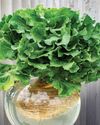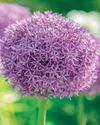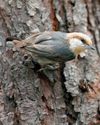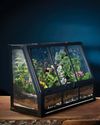
Нydroponic gardening is a method for growing plants without soil, indoors or outside. The plants get nutrients directly through water. Benefits include higher yields and fewer pests (no soil for pests to hide in!).
Whether starting with a hydroponic garden kit or DIYing your own system, choosing the best plants for hydroponics helps set beginners up for success. Here are some things to consider.
Start Small
"It's wise to focus on growing one easy vegetable first, such as lettuce, and learning that well before attempting to expand and grow a variety of different plants," says Cris Tuhy, co-owner of Sweetleaf Farm, an Andover, New Jersey, farm that grows a multitude of hydroponic produce. "You will get a sense of accomplishment and have a higher success rate overall."
Skip Underground Growers
Avoid root vegetables such as potatoes, onions and carrots, which generally require soil to thrive. Many different foods can be grown in a hydroponic garden. Microgreens are among the easiest plants to grow. Leafy greens and lettuces are also good choices.
Consider Size
Diese Geschichte stammt aus der December 2024/January 2025-Ausgabe von Birds & Blooms.
Starten Sie Ihre 7-tägige kostenlose Testversion von Magzter GOLD, um auf Tausende kuratierte Premium-Storys sowie über 8.000 Zeitschriften und Zeitungen zuzugreifen.
Bereits Abonnent ? Anmelden
Diese Geschichte stammt aus der December 2024/January 2025-Ausgabe von Birds & Blooms.
Starten Sie Ihre 7-tägige kostenlose Testversion von Magzter GOLD, um auf Tausende kuratierte Premium-Storys sowie über 8.000 Zeitschriften und Zeitungen zuzugreifen.
Bereits Abonnent? Anmelden

Basics of Hydroponics
Use these top tips and plant picks to have a successful soil-free garden

Rooted in Resilience
These hardy perennials will thrive in most zones

Social and Supportive
Brown-headed nuthatches take a helpful approach to raising their young

All About Owl Pellets
And why you should give a hoot about them

Ask the Experts
Advice from our pros about houseplants, bird feeding and more

BRING THE OUTDOORS IN
Making a terrarium is about as close as you can get to a Zen DIY project. Once you have gathered the proper materials and squared away your plant selections, it's as simple as layering it all together and watching your mini ecosystem thrive. Here, I'll walk you through my foolproof process and cover all the required elements for good filtration, healthy soil, strong root growth and resistance against fungus and disease.

GROW THIS. NOT THAT
Six easy-to-grow houseplants—and six that may not be the right choice for you

Winter MAGIC
Forecasts may be frigid, but grab your binoculars because birding opportunities are still incredible

Sense or Nonsense? - Why some birds can taste and smell - but others can't
Does a porcelain berry taste like a blueberry to a gray catbird? Does a block of lard smell like frying bacon to a northern flicker? The short answer is no. While some avian species do have a well-adapted sense of taste or smell, they can't distinguish between flavors and odors the way humans can. They're not picking up every ingredient in the suet you put out, says José Ramírez-Garofalo, an ornithology researcher at Rutgers University in New Jersey and the director of Freshkills Biological Station in Staten Island, New York.

Maple Mania - Amazing facts about this fall foliage mainstay
Amazing facts about this fall foliage mainstay